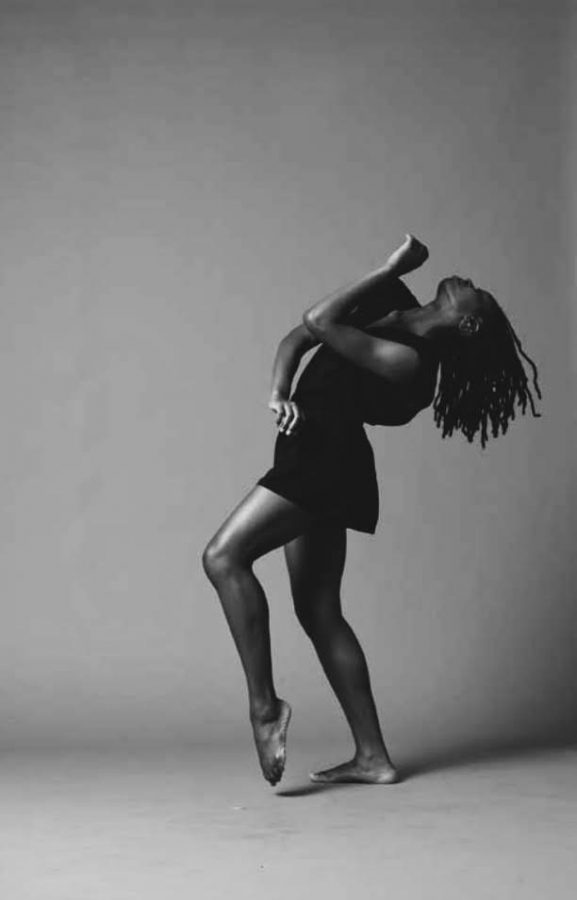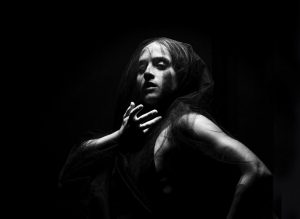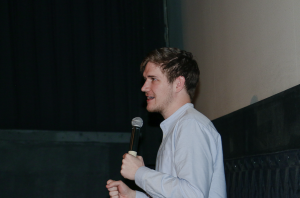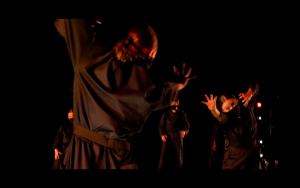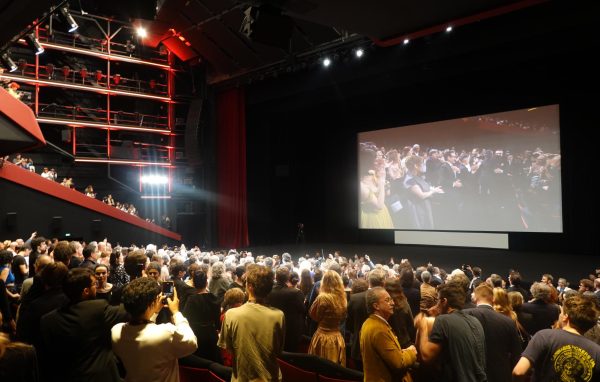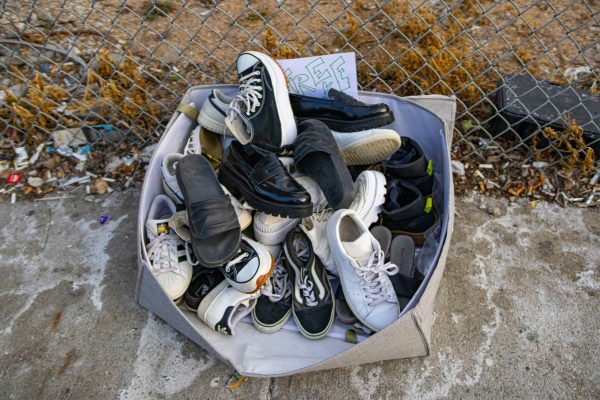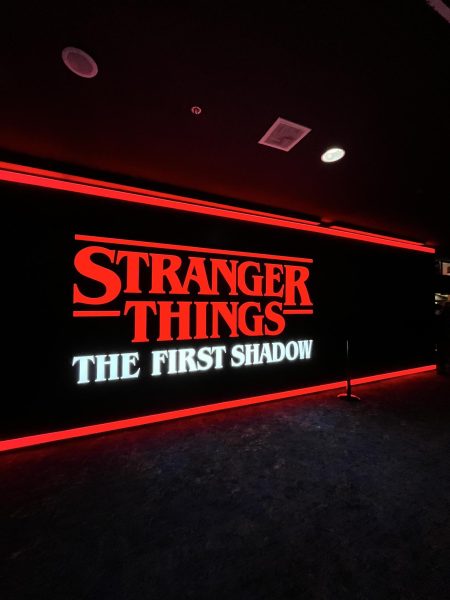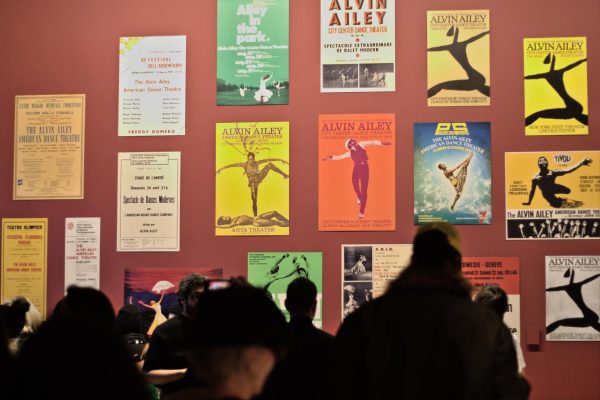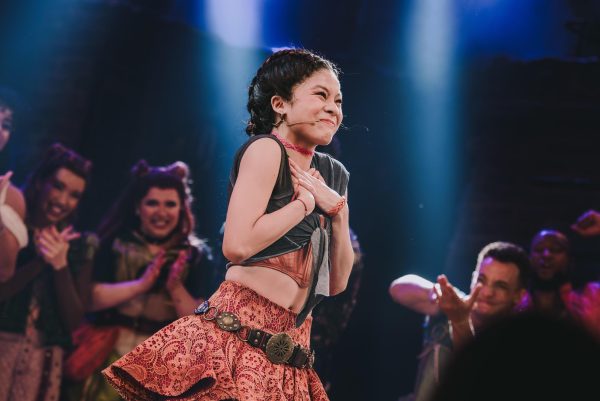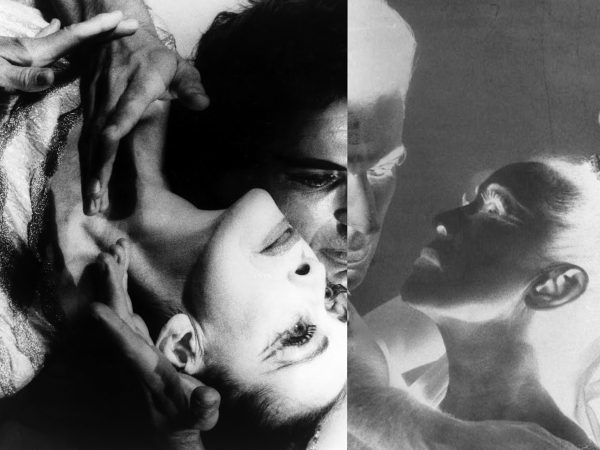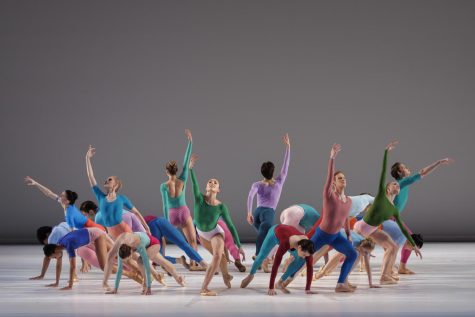Minga Prather on Dancing From ‘Revelations’ to Pools of Water
Fordham alumna embraces a flourishing freelance dance career
Minga Prather, Fordham College at Lincoln Center ’18, dances with reckless abandon beneath a simulated rainfall. Her powerful limbs etch new pathways in the water as her muscles expand and contract, mirroring a pulsating rhythm. The virtual performance of “Drenched” recently premiered and highlighted every misplaced raindrop deflected by a subtle gesture. The showcase was born out of pandemic-induced necessity, but Prather’s performance was a long time in the making.
Prather discovered dance the way many young children do: through the magic of “The Nutcracker.” As soon as her mother took her to see the show at a small studio in downtown Dallas, she was hooked. “I remember telling my mom that I wanted to be a mouse, or in my three-year-old way of saying it, I told her I wanted to be a ‘mice,’” Prather said.
Prather diversified her training to include styles such as ballet, tap, modern, jazz, flamenco and West African. She honed her skills at Booker T. Washington High School for the Performing and Visual Arts before beginning her training in the Ailey/Fordham BFA Dance Program.
Her first big break arrived during her sophomore year. She was invited to perform the first section of “Revelations” at Ailey’s Lincoln Center season for its Spirit Gala. She recalled the weight of their earth-toned dresses, the rush of cool air from the house and the way the light pooled around her fellow dancers as the curtains rose.
“It was quite a surreal and spiritual experience looking up into that light as we began to dance. I remember getting chills.” Minga Prather, FCLC ’18
“It was quite a surreal and spiritual experience looking up into that light as we began to dance. I remember getting chills,” Prather said.
This was just the beginning of Prather’s professional career. After attending Hubbard Street Dance Chicago’s summer program during her freshman year of college, she was offered a contract there in her junior year. Despite being a meticulous planner, the offer came as a surprise.
“I didn’t really know what to expect going into that audition and I also knew other people who were up for the job, and they are people that I still look up to in this field today,” Prather said. “So I definitely was not expecting to get that job.”
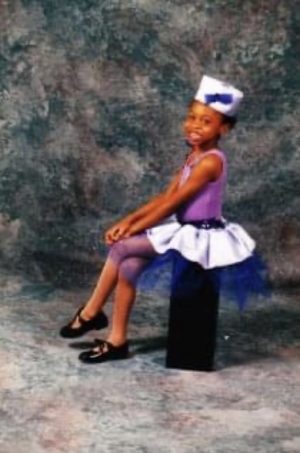
She took this opportunity in stride and completed her senior year of dance training in Chicago. Her teachers at Ailey were very supportive. “If you want the opportunity to be able to dance professionally, Ailey will work with you, which is amazing and also rare, surprisingly,” Prather said.
Thus began her transition from student to professional dancer. She had trained diligently at Ailey but quickly discovered that “nothing can really prepare you for doing eight shows a week.” Incorporating Pilates and cross-training into her daily routine helped prevent injury. She also adopted a healthy diet consisting primarily of seafood, greens and an occasional glass of red wine, usually a nice Shiraz — “full-bodied and kind of moody.”
Prather has since branched out to perform as a freelance artist. She has danced for Mark Morris Dance Group, Marc Jacobs, Vogue and Ailey, among others. Her freelance work led her to join the Dance Artists’ National Collective, a group demanding safe and equitable working conditions for dancers in the U.S.
Despite the pandemic, the show must go on, albeit virtually. Digital performances have offered unexpected benefits. Without the pressure of opening night or the presence of an audience, Prather experiences a different type of joy through dancing.
“There’s something about it that feels very intimate. … Those people are your audience. They’re still watching you. They’re still cheering you on.” Minga Prather
“There’s something about it that feels very intimate. In a way, you may not have an audience, but you still have your director. You still have your coworkers that are in the room with you. You have whoever is behind the camera,” Prather said. “And if you can envision it like that, like, those people are your audience. They’re still watching you. They’re still cheering you on.”
Part of the beauty of dance lies in experiencing it with others, even if that means virtually. As theatres begin to offer in-person performances again, there is a renewed sense of wonder and possibility palpable in the dance community.
“There’s a saying that we have, that I heard growing up,” Prather said. “It’s ‘nothing to prove, everything to share.’”

Madeline Katz, FCLC ’22, is an arts & culture editor for The Observer. She is majoring in English with a creative writing concentration. In her free time, she loves discovering new street art and relaxing at Riverside Park.

